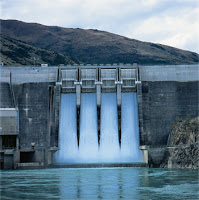It contains two words, ‘hydro’ and ‘power’. ‘Hydro’ means water, and ‘power’ in physics means energy that is used for some purpose. Therefore, hydropower is a power that generated from the energy of flowing water. Thanks to the technology, we can capture this power and turn it into electricity that is very useful for our daily life.
Hydropower is the most common as well as the cheapest source of renewable energy in the United States of America these days. As reported by EIA about hydropower energy utilization in USA, since 2008, it has been used in approximately 70% of all electricity that is generated from renewable energy source.
What is hydropower history?
Since 2,000 years ago, the Greeks have realized about hydropower potential to ease their work. They built a wooden water wheel on the river. The water flows turns the wheel and its mechanical power can be used for grinding flour or corn. It was John Smeaton, a British civil engineer that first introduces large water wheel that made from iron. This is the forerunner of the turbines that we know today. The idea to produce electricity by using the water power was first coined in 1880 in England, along with the development of the electric generator.
The process in transforming hydropower energy into electricity
The concept about hydropower is actually simple. From the schematic above we can see that the power of the flowing water is used to rotate a water turbine and creating energy that extracted to the generator. This is where the electricity comes from.
What is hydropower type that commonly used to produce electricity?
 Conventional hydroelectric
Conventional hydroelectricUtilize the potential energy of a dammed water to turn the turbine that is connected to the generator. The hydropower is depends on the volume of the dammed water (reservoir) and the height difference between the source and the penstock.
 Run-of-the-river
Run-of-the-riverWhile the conventional method uses the potential energy of dammed water, this method uses the kinetic energy of free-flowing water in the river or streams. The reservoir capacity doesn’t matter since the swiftness level of the water flows that affects the amount of the generated electricity.
 Pumped storage
Pumped storageDuring periods of low electrical demand, the water is pumped to the higher reservoir. It released back to the lower reservoir through the turbine when the demand is high. As the hydropower is passing the turbine, it will drive the turbine to rotate and produce electricity. Pumped storage can produce large-scaled electricity that can be used by a town.



